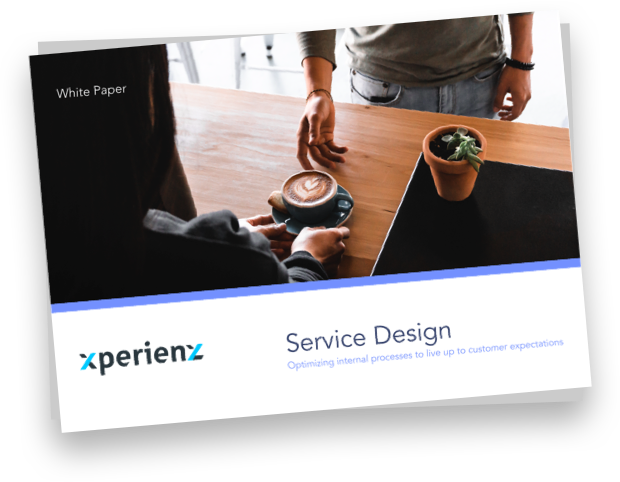Designing for the complete experience
Users don’t interact with brands in a single touchpoint. A complete end-to-end experience is made of complex chains of interactions. When you book a flight for your next vacation, you use the airline website to buy the ticket, you open their app to check-in and access the boarding pass, you might contact the call center with a question, upon arriving at the airport you head to their check-in desk, and this is all even before you set foot on the actual plane. All these touchpoints might be quite straightforward or not so much.
Service design is the process of making services work better for organisations and their clients, through research, developing ideas and testing experiences. To do so, besides taking a user-centred approach, it also comprises all the backstage functions that enable the delivery of a service, from IT to operations.
Service design helps bridge organisational gaps and remove pain points in the customer journey, which requires analysing the workflows and procedures performed throughout a service. It also takes into account the people involved in the creation or use of the service, and props like physical spaces and digital environments.
The Process
-
2 · Analising
Compiling this research provides a complete birds-eye view of the current service and what’s needed to satisfy the needs and motivations of each group. It also allows to identify inconsistencies, gaps and major weaknesses.
-
3 · Redesigning the service
Based on these findings, service designers then work with stakeholders to create a variety of fresh ideas and prototype a solution they believe will improve the service.
-
4 · Validating and refining the service
Next they test the most appealing ideas with real users using prototypes to confirm that the solution designed is the right one.
Impact and outcomes
-
Increased sales
The positive interaction with your service will lead to customer satisfaction and generate more profit for your business.
-
Increased loyalty
Fill in the gaps between what you can offer and what your users need and want, and build a long lasting customer relationship.
-
Improved efficiency
By identifying problem areas and bottlenecks, and eliminating inefficient processes.
-
Reduced redundancies
Pinpoint areas that might be overlapping and eliminate inconsistencies and ambiguities.
-
Cost-effective service
Making the latest technological advances an ally for service and cost optimisation.
-
Brand recognition in a competitive market
A better service experience will set the difference from the competition and lead to a better brand awareness.
Want to improve your service?
Xperienz researches and combines innovative design with the latest technological advances to exponentially improve your service. Your business will be more efficient and cost-effective to run and you’ll deliver a great user experience.
Tell me more

